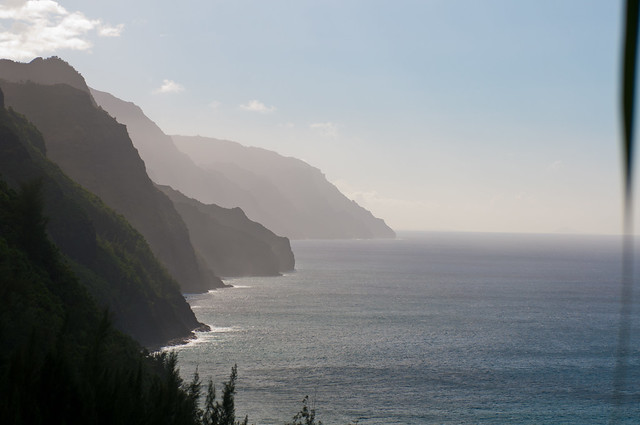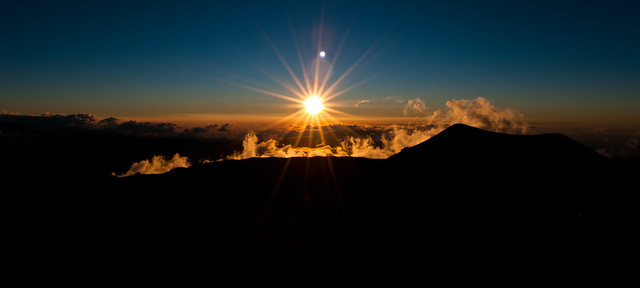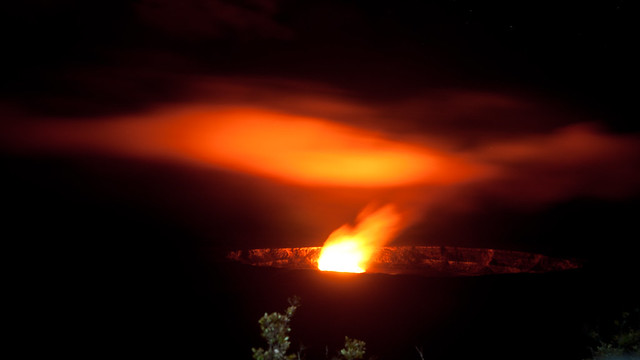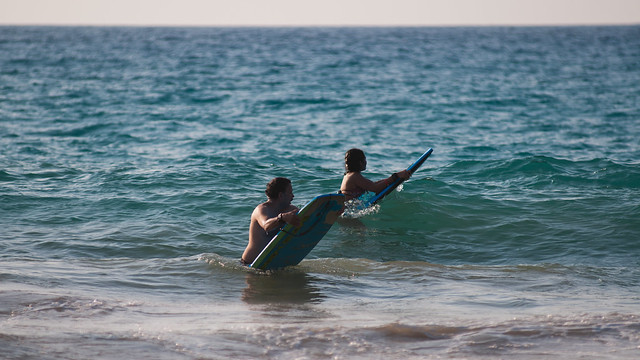I seem to have a Hawaii Hangover. It's a malaise that afflicts every soul that visits this curious archipelago of eight major islands and many more uninhabited islets. Given that we only visited two of those spectacular islands, I am afraid to think of what might have happened had we visited the others.
In Kauai, we attempted to hike the treacherous Kalalau Trail. Our goal was short, the first two miles of the 11 mile hike, to Hankapiai Beach. It should not have been a big deal. We typically hike trails that are 5-6 miles round trip, between 6,000-10,000 feet in elevation. This was at sea-level and a mere 4 mile round trip. How difficult could it be?
It was very difficult. The conditions made it dangerous. It was muddy and slippery from the incessant winter rain. If there is one thing we drop a fair amount of money on, it's hiking boots. Despite wearing hiking boots with excellent traction, we decided to turn back after barely 3/4 mile. There's a reason why it is considered one of the 10 most dangerous trails in the US! The views of Kauai's Na Pali Coast, though, were unbelievable!
We left more than a little reluctantly from our newly-found paradise, Kauai. An island hopper flight took us to the Big Island of Hawaii, which we explored in a 4WD Jeep Wrangler. We went from sea-level to 13,000ft in a matter of an hour, from 85F to 29F, and wind-chills even lower. It was exhilarating to say the least. We had adequate winter-wear but the wind was brutal and relentless, making it difficult to continue to stay at the summit to gaze at the stars. We descended to the Visitor Center and star-gazed from there instead.
My family ziplined at Honomu, while I explored Akika Falls, made friends with local kids and bought locally-made preserves. The next day, we drove south to all the famous beaches.
We did not get to see any lava flows up close and the closest we got to a volcano was when we went up to the Kilauea caldera after hitting all the beaches. Carry your inhaler with you if you are even mildly asthmatic or have a sensitive respiratory system.
We capped off the visit with boogie boarding or body boarding at Hapuna Beach.
Interestingly enough, good food on Big Island proved elusive. We had much better luck in Kauai. In fact, the first meal we had was quite memorable. It was from a takeaway called Fish Express. They had excellent seaweed salad and spicy poke, but their chicken karaage was what blew our minds. Often called Japanese Fried Chicken or JFC, this was thigh meat marinated in soy sauce and spices, and then deep-fried to perfection. A thin crunchy layer on the outside and molten chicken on the inside. I knew I had to look it up and try to recreate it at home. It was that good!
I found two recipes online, one from Marc of No Recipes, and the other from Makiko of Just Hungry. After several attempts, I found that a combination of the two recipes worked for me and then I hit upon a bonus. You might enjoy that more than anything else, especially if you are vegetarian! Make sure you read through to the end. And, yes, there's nothing Indian about this recipe.
It was through this recipe that I found Bob's Red Mill potato starch, and it has for all practical purposes replaced corn starch in my kitchen. Use corn starch if you don't have access to potato starch.
If you have vegetarian friends you need to please, prepare extra marinade and marinate shaved carrots, shaved celery, very thinly sliced onions, and cilantro for at least 10-15 minutes. Add a finely minced green chile for some kick. Add potato starch, mix well and deep fry until golden brown. These, my friends, are Japanese pakodas!
Notes:
In Kauai, we attempted to hike the treacherous Kalalau Trail. Our goal was short, the first two miles of the 11 mile hike, to Hankapiai Beach. It should not have been a big deal. We typically hike trails that are 5-6 miles round trip, between 6,000-10,000 feet in elevation. This was at sea-level and a mere 4 mile round trip. How difficult could it be?
It was very difficult. The conditions made it dangerous. It was muddy and slippery from the incessant winter rain. If there is one thing we drop a fair amount of money on, it's hiking boots. Despite wearing hiking boots with excellent traction, we decided to turn back after barely 3/4 mile. There's a reason why it is considered one of the 10 most dangerous trails in the US! The views of Kauai's Na Pali Coast, though, were unbelievable!
We left more than a little reluctantly from our newly-found paradise, Kauai. An island hopper flight took us to the Big Island of Hawaii, which we explored in a 4WD Jeep Wrangler. We went from sea-level to 13,000ft in a matter of an hour, from 85F to 29F, and wind-chills even lower. It was exhilarating to say the least. We had adequate winter-wear but the wind was brutal and relentless, making it difficult to continue to stay at the summit to gaze at the stars. We descended to the Visitor Center and star-gazed from there instead.
My family ziplined at Honomu, while I explored Akika Falls, made friends with local kids and bought locally-made preserves. The next day, we drove south to all the famous beaches.
We did not get to see any lava flows up close and the closest we got to a volcano was when we went up to the Kilauea caldera after hitting all the beaches. Carry your inhaler with you if you are even mildly asthmatic or have a sensitive respiratory system.
We capped off the visit with boogie boarding or body boarding at Hapuna Beach.
Interestingly enough, good food on Big Island proved elusive. We had much better luck in Kauai. In fact, the first meal we had was quite memorable. It was from a takeaway called Fish Express. They had excellent seaweed salad and spicy poke, but their chicken karaage was what blew our minds. Often called Japanese Fried Chicken or JFC, this was thigh meat marinated in soy sauce and spices, and then deep-fried to perfection. A thin crunchy layer on the outside and molten chicken on the inside. I knew I had to look it up and try to recreate it at home. It was that good!
I found two recipes online, one from Marc of No Recipes, and the other from Makiko of Just Hungry. After several attempts, I found that a combination of the two recipes worked for me and then I hit upon a bonus. You might enjoy that more than anything else, especially if you are vegetarian! Make sure you read through to the end. And, yes, there's nothing Indian about this recipe.
It was through this recipe that I found Bob's Red Mill potato starch, and it has for all practical purposes replaced corn starch in my kitchen. Use corn starch if you don't have access to potato starch.
Japanese Fried Chicken / Chicken Karaage
- 1 lb boneless chicken thighs, preferably skin-on, cut into bite-size pieces
- 1 tbsp grated ginger
- 2 tsp grated garlic
- 3 tbsp tamari (or soy sauce)
- 1 tbsp sake
- 1 tsp sugar
- 1/3 cup potato starch
- Oil for frying
- A few drops of sesame oil
- Mix together ginger, garlic, tamari, sake, and sugar. Add chicken pieces and ensure that they are coated well with the marinade. Marinate in your refrigerator for at least one hour.
- Add a few drops of sesame oil to your pot with oil for deep-frying. Heat the oil until it is about 360F. Or test with a small piece of skin coated in potato starch. If it sizzles and floats to the top right away, you know your oil is ready for deep-frying.
- If the marinade is too watery, drain off some liquid and only then add potato starch to the marinated chicken. Mix well.
- Deep fry the chicken, a few pieces at a time, until golden-brown. Don't crowd the pan as it will cause the temperature of the oil to drop, resulting in overly greasy fried chicken.
- Drain on a wire rack to keep the chicken crispy.
- Just before serving, squeeze lemon liberally over the chicken and enjoy hot.
If you have vegetarian friends you need to please, prepare extra marinade and marinate shaved carrots, shaved celery, very thinly sliced onions, and cilantro for at least 10-15 minutes. Add a finely minced green chile for some kick. Add potato starch, mix well and deep fry until golden brown. These, my friends, are Japanese pakodas!
Notes:
- Skip the sake if you don't have any. I tried adding a variety of booze but it didn't work. It doesn't have to be fancy sake. The inexpensive filtered Gekkeikan will do.
- I tried rolling the chicken in potato starch instead of adding it to the chicken but I ended up with fried chicken that looked like it had a disease. No really! Blotchy white covering that didn't look appetizing. Mixing the potato starch into the marinade worked much better.
- For an even crispier covering, allow the chicken to cool and then fry it again. Yup, twice-fried chicken! Then make sure you hike all 11 miles of the Kalalau Trail and back to work off all those calories!
- You could add some red chile powder to the marinade for additional kick but it's much better without, if you ask me!

















4 comments:
MMMMmmm, Kara-age! I discovered this a couple of years back when I was learning about Japanese cuisine. Couple of tips: if you have time, it's nice to dredge your marinaded chicken in the potato (or rice) starch, and let it stand on a rack for about 20 min. The breading "binds" better that way.
I've been hearing good things about Astaxanthin for treating heart and liver problems, and also for general stamina. It is what makes shellfish turn red when we cook them, and what gives salmon its red colour. In the documentary I saw from NHK World (Japanese TV in English) they suggested adding fresh salmon to the rice in your rice cooker: just lay a fillet on top of the rice-and-water, and cook as normal for rice. Let the unopened cooker stand for about 10 minutes when it clicks over to the keep-warm function, then open the cooker and break up the salmon and stir it in. Yum! A squeeze of lemon is nice. It's even tasty cold, with a little Kewpie mayonnaise on top!
To replace sake, you can use "rice wine" from the Chinese grocery. I buy one that comes in an earthenware jar with a red silk ribbon, and it works well. I have used dry Spanish sherry when I couldn't get anything else; the flavour is slightly different but it does work.
Stunning pictures!
You have managed quite a few trips int he last few months! As for the pakoras, I have never bought anything but a whole chicken in India! Better check some 'fancy' butchers who sell different parts, at premium prices, I'm sure.
The hills, the beaches, just WOW.
love the pictures of the fried chicken as well as the great idea for the Japanese pakodas!
Do you find the potato starch to be different than corn starch?
Post a Comment